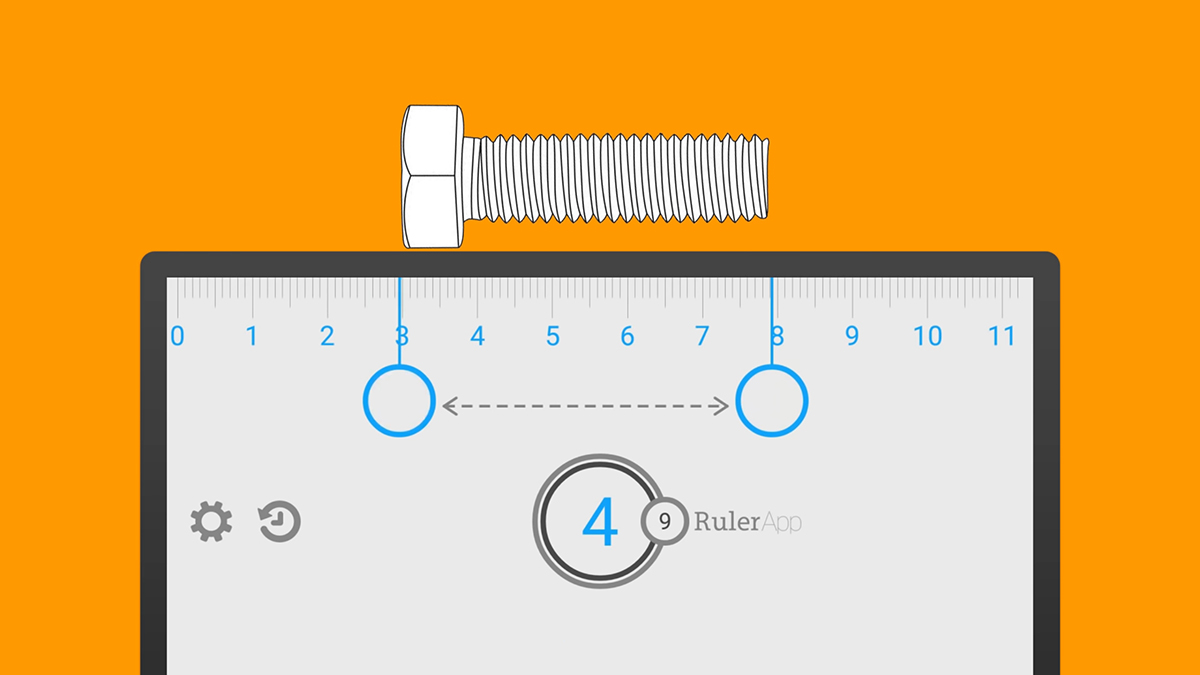

Your phone can do it all. It’s a portable music player, diary, digital camera, communication device, calculator, and just about everything else. But you might not have considered that it can also replace your measuring tape. With the right sensors on board and the right apps installed, you can measure more data with your phone than you might think.
Measure altitude with your phone
Your phone can figure out how high up it is through GPS signals, map readings, and an internal barometer, if it has that particular sensor baked in (which many phones do). You’ll need to install a third-party app to calculate and display your current altitude though, as it’s not a data point that your phone is going to present you with otherwise.
My Altitude and My Altitude and Elevation GPS are good iOS options, while My Elevation and Altimeter Ler come highly recommended on Android (maybe try more than one and see if they match, if accuracy is absolutely vital). All four apps are free or freemium. Many different running, cycling and skiing apps are able to track your altitude over time too.
Measure humidity with your phone
Smartphones don’t actually have hygrometers (humidity sensors) built in—at least not yet—so if you want to measure humidity, you either need an app that tells you the outdoor reading in your local area by looking it up online, or a gadget that’s going to do the actual measuring for you and then beam the findings straight to an app on your phone.

For the former category, try the free Hygrometer app for iOS or the free-with-ads Thermometer-Hygrometer app for Android; you’ll also find humidity data in many weather apps. When it comes to indoor and outdoor gadgets, the $180 Netatmo Weather Station is one of the best options, as is the more affordable $55 Govee Thermo-Hygrometer.
Measure distance with your phone
Google Fit, Apple Health, and a host of other fitness-tracking apps will measure the sort of distances you’re traveling, but if you specifically want to measure the distance from point A to point B then the freemium Strava for Android or iOS is one of the best options—it’ll log exactly how much ground a journey has covered, and even plot it out on a map for you.

If you’ve got something specific in mind then get a specific app: MileIQ (free) tracks car mileage, while Polarsteps (free) will log how far you’ve gone across land, sea, and air. To measure distances without moving, use the free Google Maps for Android or iOS—touch and hold on the map to drop a red pin, tap the location card, then pick Measure distance.
Measure speed with your phone
Your phone does a pretty good job of measuring your speed, thanks to the accelerometer and other built-in sensors. Google Maps (free) for Android or iOS shows your speed while you’re driving, for example. For cyclists, the freemium Cyclemeter is excellent, capturing and displaying a bunch of real-time stats (including speed) while you’re moving.

If you just want to know your speed and nothing else, then SpeedView for Android and Speedometer Speed Box App for iOS (both freemium) are among the most capable apps we’ve seen (and there are quite a few in this category). Both apps enable you to see your speed over time on a graph, and SpeedView lets you export your data elsewhere too.
Measure air quality with your phone
As with humidity, your phone doesn’t have the necessary sensors on board to measure air quality. You can, however, get apps that tell you the current air quality in your local area. The free AirVisual is one of the best we’ve come across, providing you with a bunch of statistics and real-time information, though we also like the freemium Air Matters as well.

The other alternative is to buy an indoor air-quality monitor that can feed information back to your phone (as well as showing it on a built-in display, usually). Two of the leading options here are the $185 Airthings Wave Plus and the retro-looking $170 Awair box—as an added bonus, both these gadgets offer support for Alexa and Google Assistant control.
Measure length and space with your phone
Both Google and Apple have released augmented reality apps called Measure that let you measure lengths and objects and floor space. The readings might not be accurate enough for professional use, but they can help you work out roughly how much space you’ve got, or how big something is.

Other mobile app options worth checking out are the freemium Ruler app for Android (which brings up an on-screen ruler so you can measure with your phone), the free Moasure app for Android (a smart tape measure offering a host of useful features), and the comprehensive and free Ruler for iOS (which combines AR and non-AR measuring tools).
Measure weight with your phone
You can’t really use your phone as a weight scale in any serious way, but that doesn’t mean people haven’t tried—check out the free Working Scale for Android, for example, which taps into a variety of sensors in your phone to try and estimate the weight of small objects placed on top of it—small as in between 2 and 100 grams in total weight.

To seriously measure weights with your phone, you need to invest in some digital scales and then connect them to a phone app, which can then log weights, convert weights, and so on. The $130 Fitbit Aria will measure your own weight and help you hit your target goals, for instance, while the $30 Etekcity Scale will do an excellent job in the kitchen.